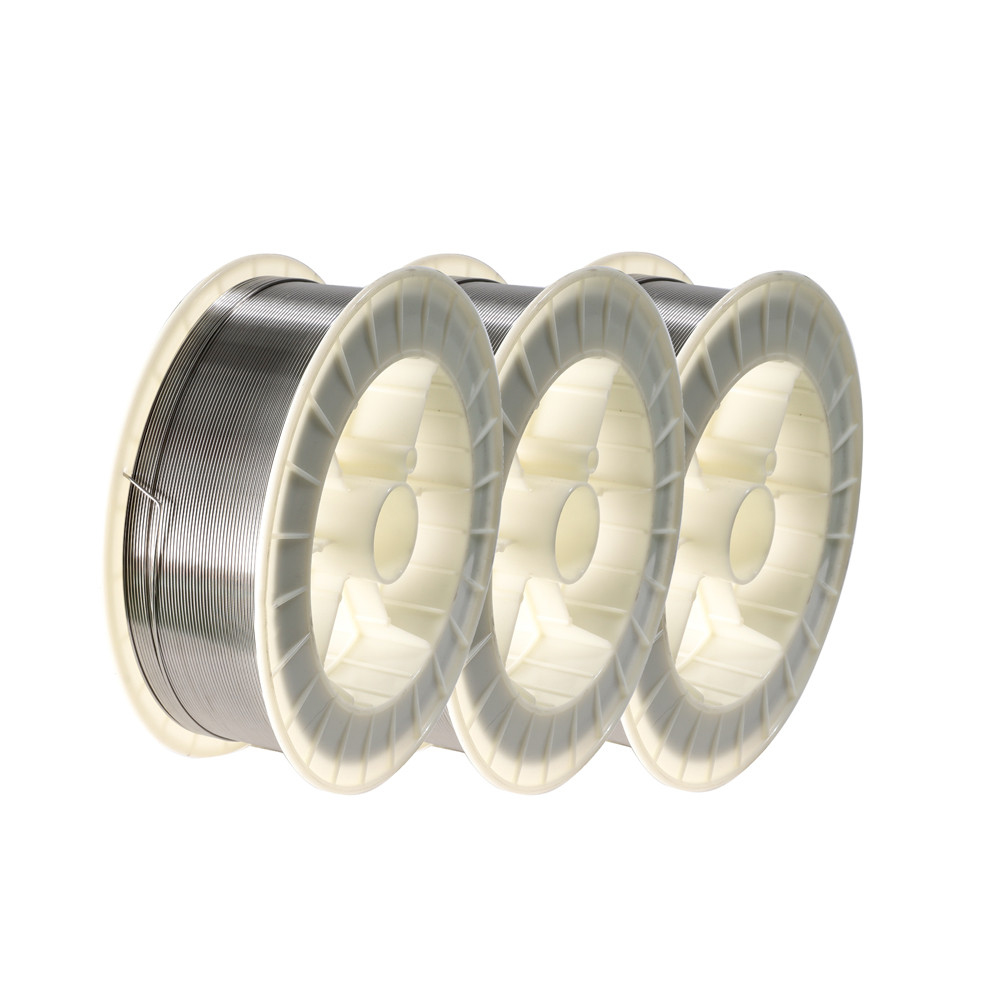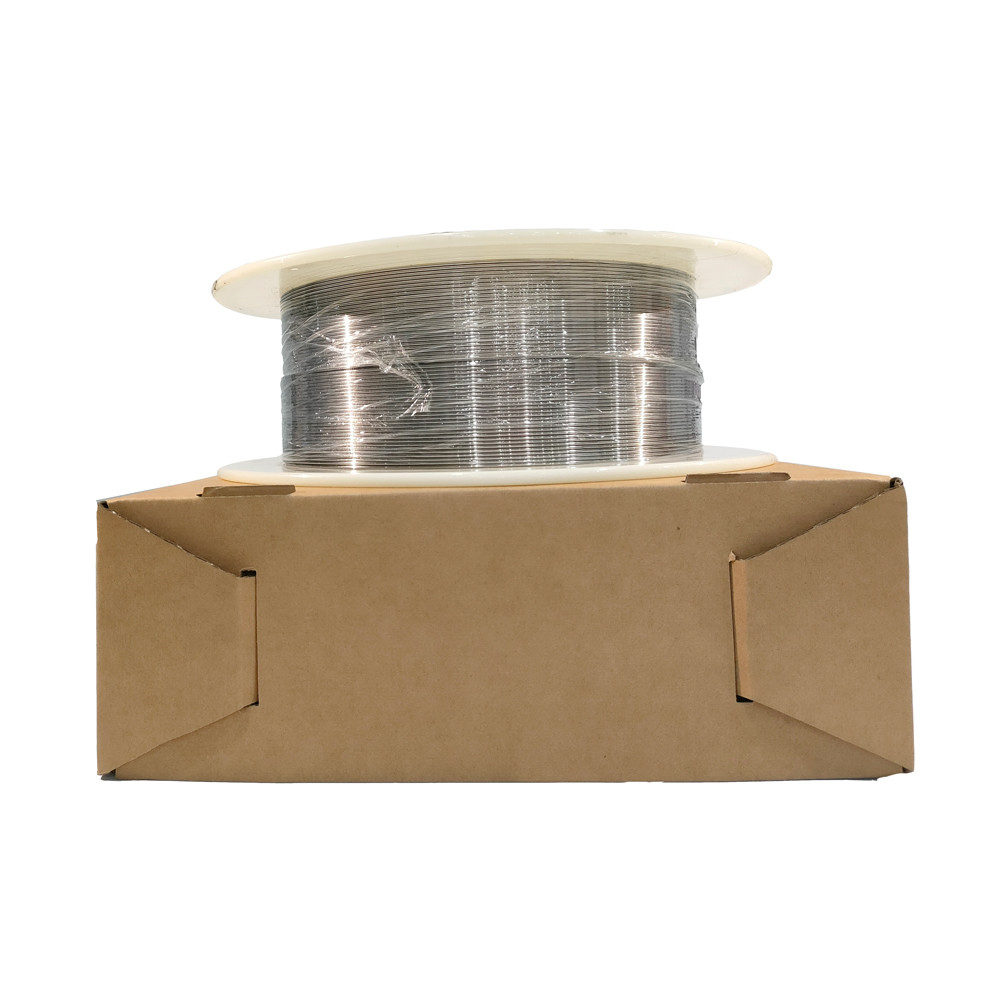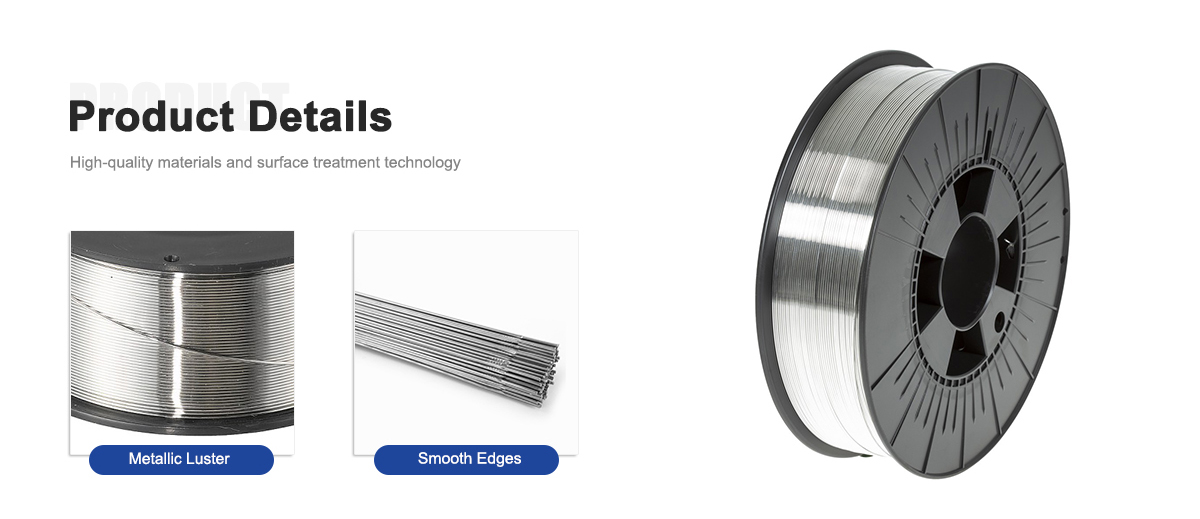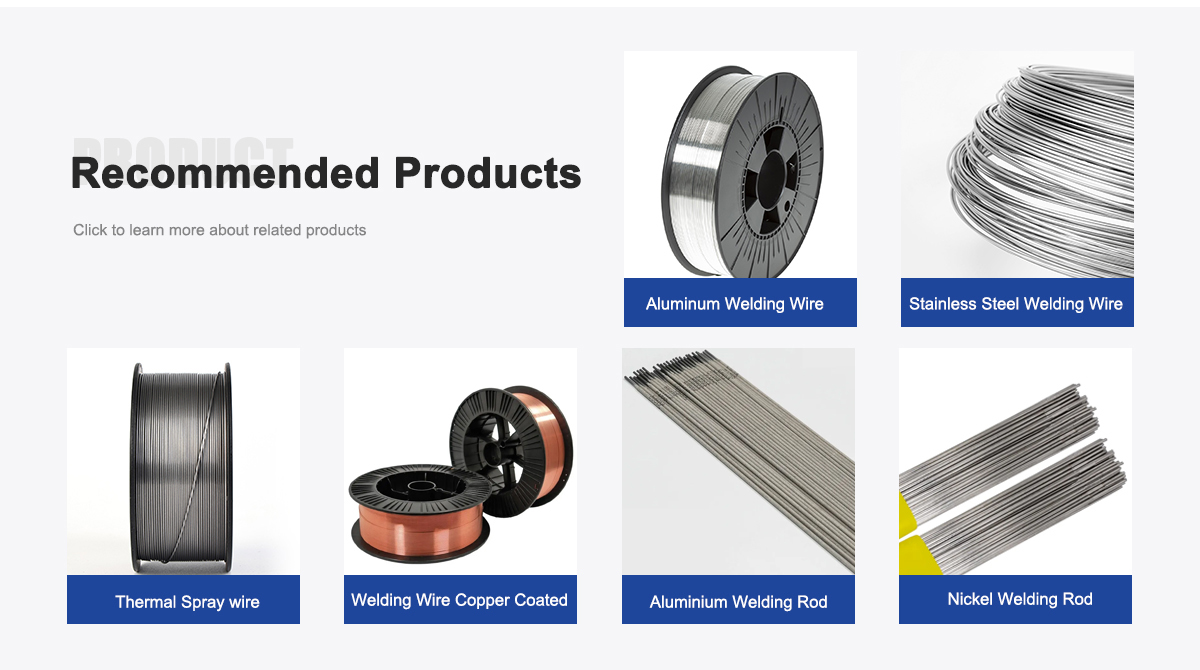 0
0
Products Description

Nickel-based welding wire is a key welding material used to repair aerospace engines. As an important component of aircraft, aero engines are subject to complex environmental conditions such as extremely high operating temperatures, pressures, and vibrations. Therefore, wear, fatigue cracks, or other damage may occur during use.
Nickel-based welding wire has excellent high-temperature strength, corrosion resistance and fatigue properties, making it ideal for repairing aerospace engines. Nickel-based welding wire can be used to partially repair damaged engine parts and restore their original mechanical properties and functions.
In aero-engine maintenance, nickel-based welding wire can be used to repair key components such as turbine blades, combustion chambers, and gas turbine casings. Welding repairs can fill defects in damaged surfaces, repair cracks and restore the shape and size of components. This repair method can extend the service life of aeroengines, reduce maintenance costs, and ensure engine reliability and safety.
Nickel-based welding wire also has good processability and can meet the shape and structural requirements of complex engine components. At the same time, its welding performance is stable and it can provide high-quality welding joints to ensure that the repaired parts have good welding strength and durability.

Welding series:
ERNiCrMo-3,ERNiCrMo-4,ERNiCrMo-13,ERNiCrFe-3,ERNiCrFe-7,ERNiCr-3,ERNiCr-7,ERNiCu-7,ERNi-1, ER70S-6.
Standard: Conforms to Certification AWS A5.14 ASME SFA A5.14
Size: 0.8MM / 1.0MM / 1.2MM / 1.6MM / 2.4MM / 3.2MM / 3.8MM / 4.0MM / 5.0MM
Form: MIG(15kgs/spool), TIG(5kgs/box),Strip
Product parameters:

Main component: nickel alloy (nickel is the main component, including other alloy elements)
Diameter range: usually between 0.8mm and 2.4mm
Strength: High strength and excellent mechanical properties
Heat Resistance: Ability to withstand stress and thermal cycling in high temperature environments
Corrosion resistance: Anti-corrosion ability, able to cope with harsh working environment
Item | ERNiCrMo-3 | ERNiCrMo-4 | ERNiCrMo-13 | ERNiCrFe-7 | ERNiCr-3 | ERNiCu-7 | ERCuNi | ERNi-1 |
C | 0.1 | 0.02 | 0.01 | 0.04 | 0.1 | 0.15 | 0.03 | 0.15 |
Mn | 0.05 | 1 | 0.5 | 1 | 2.5-3.5 | 4 | 0.5-1.0 | 1 |
Fe | 5 | 4-7 | 1.5 | 7-11 | 3 | 2.5 | 0.65 | 1 |
P | 0.02 | 0.04 | 0.015 | 0.02 | 0.03 | 0.02 | 0.01 | 0.03 |
S | 0.015 | 0.03 | 0.005 | 0.015 | 0.015 | 0.015 | 0.01 | 0.015 |
Si | 0.05 | 0.08 | 0.1 | 0.5 | 0.5 | 1.25 | 0.15 | 0.75 |
Cu | 0.5 | 0.5 | N/A | 0.3 | 0.5 | rest | rest | 0.25 |
Ni | ≥58 | rest | rest | rest | ≥67 | 62-69 | 30-32 | ≥93 |
Co | N/A | 2.5 | 0.3 | N/A | N/A | N/A | N/A | N/A |
Al | 0.4 | N/A | 0.1-0.4 | 1.1 | N/A | 1.25 | 0.15 | 1.5 |
Ti | 0.4 | N/A | N/A | 1 | 0.75 | 1.5-3 | 0.5 | 2-3.5 |
Cr | 20-23 | 14.5-16.5 | 22-24 | 28.5-31 | 18.0-22.0 | N/A | N/A | N/A |
Nb+Ta | 3.5-4.15 | N/A | 1.8-2.5 | 0.01 | 2.0-3.0 | N/A | N/A | N/A |
Mo | 8.0-10 | 15-17 | 15-16 | 0.5 | N/A | N/A | N/A | N/A |
V | N/A | 0.35 | N/A | N/A | N/A | N/A | N/A | N/A |
W | N/A | 3.0-4.5 | N/A | N/A | N/A | N/A | N/A | N/A |
Rest | ≤0.50 | ≤0.50 | ≤0.50 | ≤0.50 | ≤0.50 | ≤0.50 | ≤0.50 | ≤0.50 |

Nickel and Nickel Alloy Welding Wire | |
Product Model (AWS) | Application |
ERNiCr-3 | For welding 600, 601 and 800 alloys themselves, and welding dissimilar steels between stainless steel and carbon steel ERNiCrFe-7; For welding Inconel alloys within ASTM B163, 166, 167 and 168 |
ERNiCrFe-6 | For welding of steel and Inconel, welding of steel and stainless steel and nickel-based alloys |
ERNiCrCoMo-1 | Dissimilar welding for welding nickel-chromium-cobalt-molybdenum alloys and various superalloys |
ERNiCrMo-3 | It is used for welding of nickel alloy, carbon steel, stainless steel and low alloy steel, mainly used for welding of 625, 601, 802 alloy and welding of 9% nickel alloy |
ERNi-CI | Industrial pure nickel for welding malleable and grey cast iron |
ERCuNi | For welding of 70/30, 80/20, 90/10 copper-nickel alloys |
ERNiCu-7 | For welding nickel copper alloys B127, 163, 164 and 165 etc. |
ERNi-1 | For welding of pure nickel castings and forgings such as alloys within ASTM B160, 161, 162, 163 |
ERNiFeMn-CI | For welding of nodular cast iron, ductile iron, malleable cast iron and grey cast iron to itself or to stainless steel, carbon steel, low alloy steel and various nickel alloys |
ERNiCrMo-4 | For welding nickel-chromium-molybdenum alloy itself, or welding nickel-chromium-molybdenum alloy and steel and most other nickel-based alloys |
ERNiCrMo-11 | It is used for welding of nickel-chromium-molybdenum alloy itself, or welding of nickel-chromium-molybdenum alloy and steel and most other nickel-based alloys, and can also be used for surfacing welding of nickel-chromium-molybdenum alloy and steel welding seam |
ERNiCrMo-13 | For welding low carbon nickel chromium molybdenum alloys |

Product Features:

High temperature performance: Nickel-based welding wire can maintain stability and strength in high-temperature environments and is not prone to deformation, melting or oxidation to ensure the reliability and long life of aeroengines.
Corrosion resistance: Nickel-based welding wire has excellent corrosion resistance and can resist the erosion of welded joints by corrosive media and chemical substances, ensuring the reliable operation of aerospace engines in harsh environments.
Thermal fatigue resistance: Nickel-based welding wire can resist thermal fatigue and creep at high temperatures, reduce stress concentration and damage caused by temperature changes, and extend the service life of aeroengines.
Excellent welding performance: Nickel-based welding wire has good welding performance and can be welded well with materials commonly used in aerospace engines, such as nickel-based alloys, titanium alloys, etc., ensuring the quality and reliability of welded joints.
Specific applications:

Nickel-based welding wire is widely used in aero-engine repair, including but not limited to the following aspects:
Repair damaged turbine blades and combustor components
Repair fatigue cracks and other structural damage
Repair corroded or oxidized parts
Repair welded joints in high temperature environments

Other relevant knowledge points:

Nickel-based welding wire is usually welded using methods such as argon arc welding, plasma welding or laser welding.
Appropriate heat input and welding parameters need to be controlled during the welding process to ensure welding quality and joint performance.
The application of nickel-based welding wire in aero-engine repair requires strict technical specifications and standards to ensure that the repair results meet safety and performance requirements.
All in all, nickel-based welding wire, as a key material for repairing aeroengines, has excellent high temperature resistance, corrosion resistance and thermal fatigue resistance. Its high temperature performance, corrosion resistance, thermal fatigue resistance and good welding resistance make it ideal for repairing aircraft engines. By using nickel-based welding wire, damaged engine components can be effectively repaired, extending the life of the aeroengine and ensuring its reliable operation in harsh environments.

FAQ

What is nickel-based welding wire?
Nickel-based welding wire is a welding material used for welding and filling nickel alloy materials.
What industries and applications are nickel-based welding wires suitable for?
Nickel-based welding wire is widely used in aerospace, petrochemical, energy, nuclear engineering and other fields.
Is nickel-based welding wire suitable for repairing aircraft engines?
Yes, nickel-based welding wire is commonly used to repair critical components of aerospace engines.
E-mail: Info@hulkalloy.com
Mobile: 0086 13852926463
Tel: 0086 13852926463
Whatapps: 0086 13852926463
Add: Renli Village, Fangxian Town, Danyang City, Jiangsu Province, China